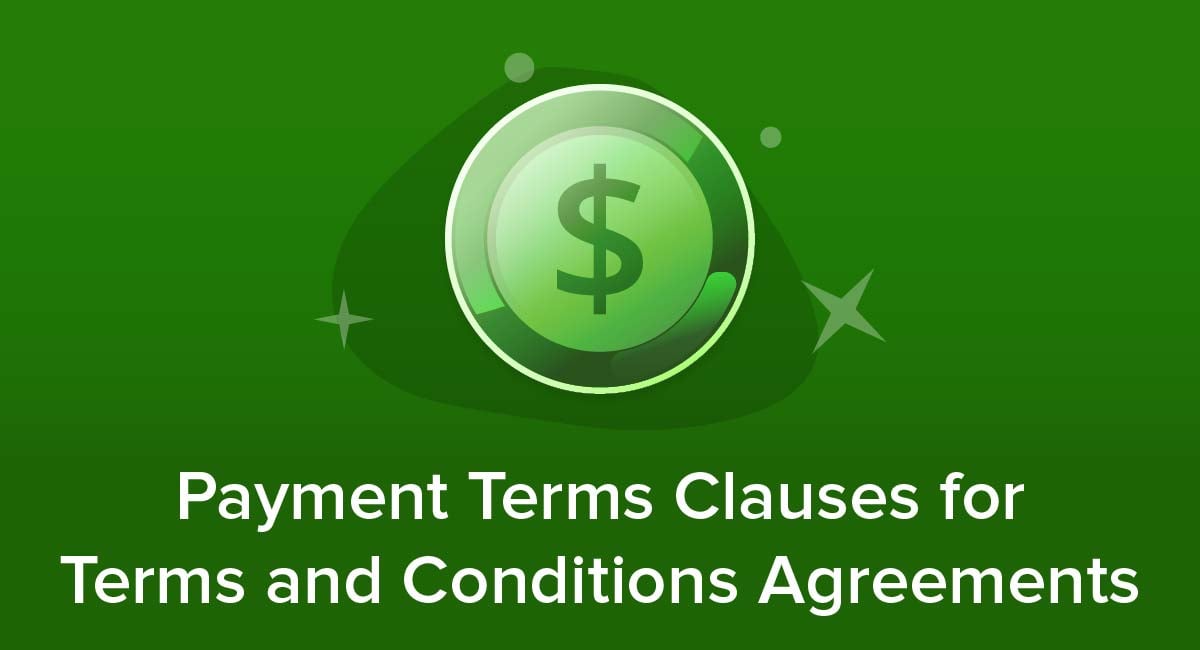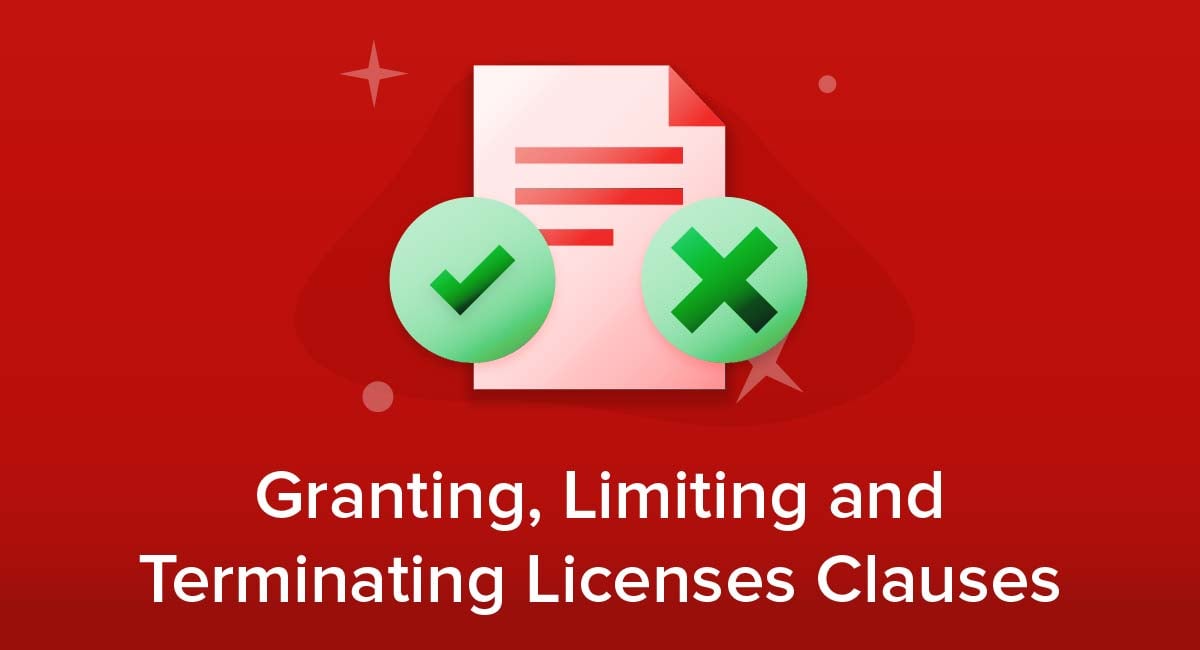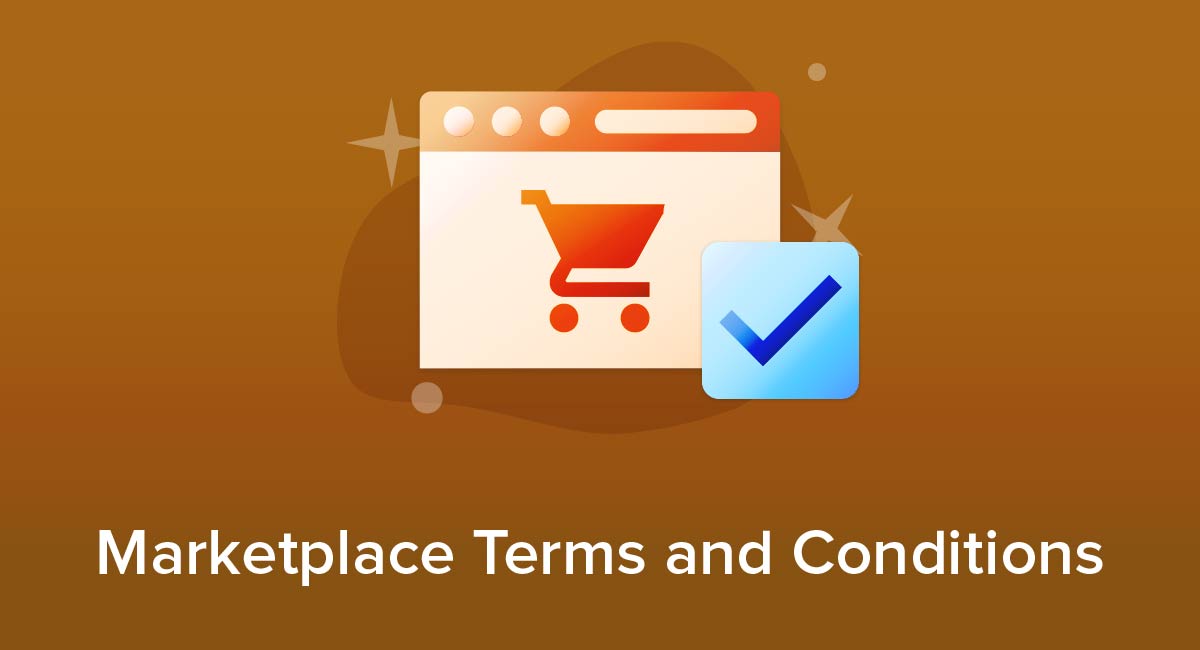
When you bring together buyers and sellers in a marketplace, you still have rights and responsibilities even though you aren't personally supplying goods or services.
A Terms and Conditions agreement lets you assert those rights and responsibilities. This means everyone knows where they stand and legal disputes are less likely.
Here's what you need to know about why your marketplace needs a Terms and Conditions agreement, how to create a Terms and Conditions agreement, and how to display and get agreement to one.
Our Free Terms and Conditions Generator is created to help you generate a professionally drafted agreement that can include various terms and conditions for your site and/or app.
- Start the Free Terms and Conditions Generator from our website.
- Select platforms where your Terms and Conditions will be used (website, app or both):
- Answer a few questions about your website or app information:
- Select the country:
- Answer a few questions about your business practices:
-
Enter your email address where you'd like to receive the new Free Terms and Conditions and click "Generate":
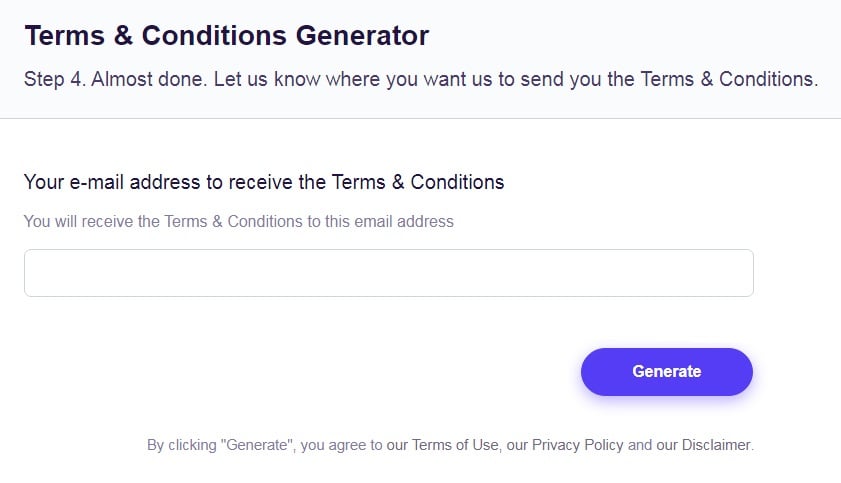
Once generated, you can copy and paste your Free Terms and Conditions agreement on your website or app or link to your hosted Free Terms and Conditions page.
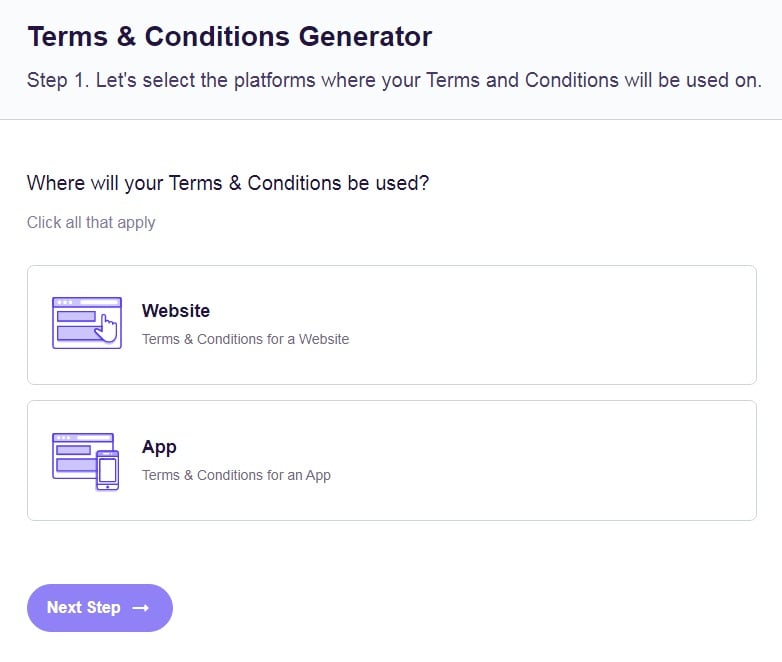
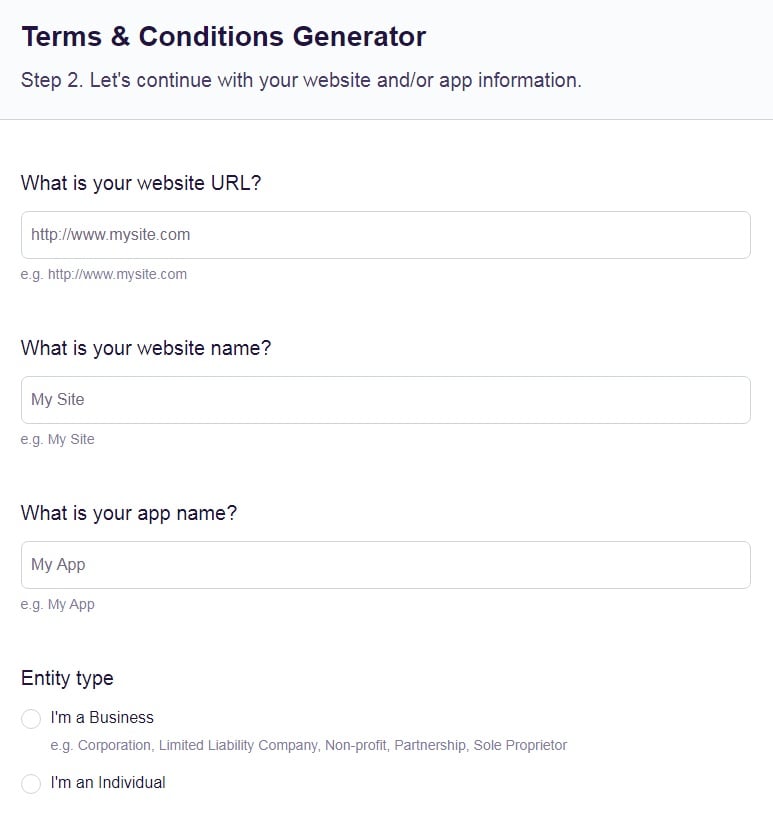
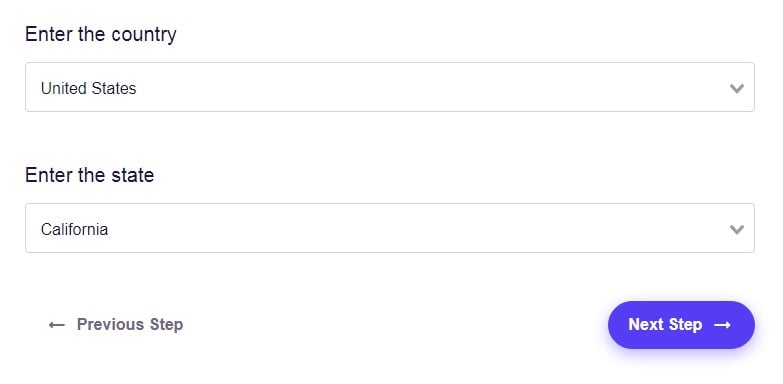
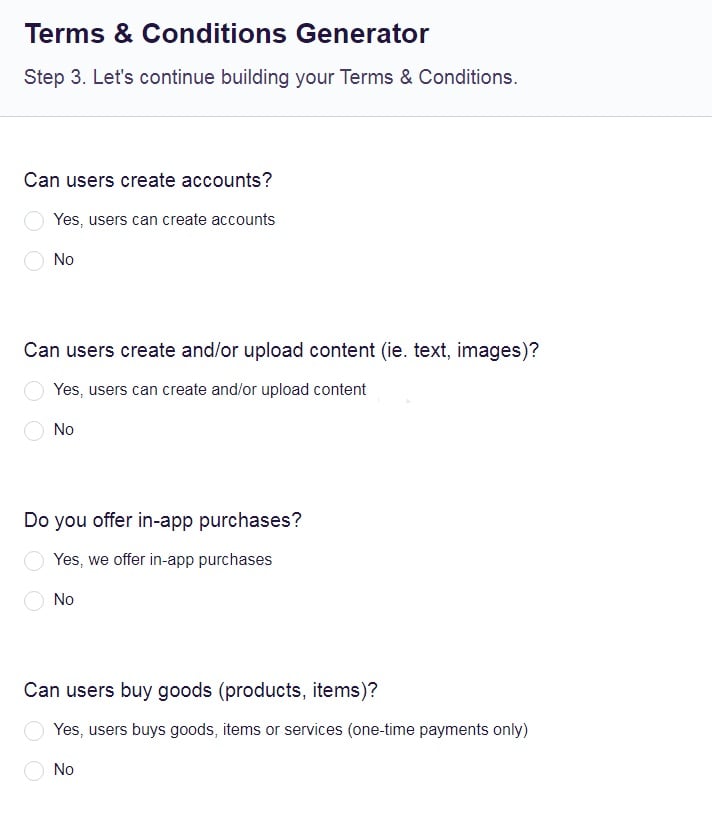
- 1. Why Have a Terms and Conditions Agreement For a Marketplace?
- 2. How to Create a Marketplace Terms and Conditions Agreement
- 2.1. Your Role as the Marketplace
- 2.2. Accuracy of Descriptions
- 2.3. Rules and Restrictions
- 2.4. Pricing, Payments and Fees
- 2.5. Returns and Refunds
- 2.6. How Disputes are Handled
- 2.7. Intellectual Property
- 2.8. Governing Law, Jurisdiction and Dispute Resolution
- 2.9. Liability and Warranty Disclaimers
- 2.10. A Link to Your Privacy Policy
- 2.11. Account Termination
- 3. How to Display and Get Agreement to Your Terms and Conditions
- 4. Summary
Why Have a Terms and Conditions Agreement For a Marketplace?
A Terms and Conditions agreement (T&C) is a legal agreement where you outline your ground rules for a legal relationship between yourself and other parties. You might think that you don't need a Terms and Conditions agreement for a marketplace if you aren't actually selling and supplying goods or services yourself. However, you still have a legal relationship with users of your site.
A good Terms and Conditions agreement will anticipate potential points of disagreement or confusion and remove the need to rely on assumptions. People are less likely to take legal action against you when they know the rules, and you are more likely to win any case if you can point to clear terms and conditions that the other party accepted.
Making sure users read and understand your Terms and Conditions will clearly establish your rights and the limits on your responsibility. If you write them clearly, potential users will be confident that you are open and professional, which may help them decide whether to use your marketplace.
How to Create a Marketplace Terms and Conditions Agreement

As a Terms and Conditions agreement is binding, you need to be clear whether a particular agreement is between you and:
- Buyers on your marketplace
- Sellers on your marketplace
- Both
In this guide, we've concentrated on the agreement between you and buyers. This agreement needs to establish the rules for your relationship and clarify when and how things work differently because you are a marketplace rather than a seller.
It's important to be clear here as buyers may make incorrect assumptions if they view you simply as an online seller.
GAME's overview of its marketplace Terms and Conditions is a good example of the range of points you need to address:
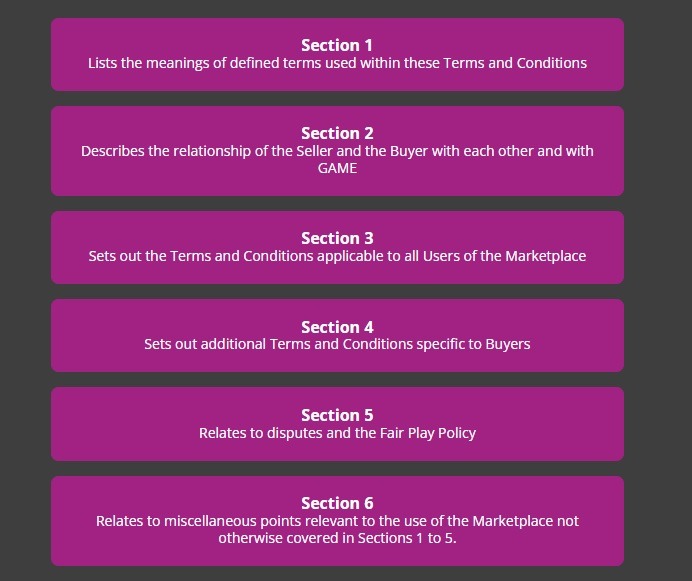
Consider including the following clauses.
Your Role as the Marketplace
Given the nature of an online marketplace, it makes sense to start by establishing exactly who you are. This helps avoid any confusion for buyers between your responsibilities and that of sellers.
This clause should include your company name and contact information. If you have branches or subsidiaries in multiple countries, make clear which one the user will be dealing with.
This clause should also clearly state your role is purely as a platform and intermediary and that you are not the seller when users place an order.
If some products are sold by you and some by third parties, make clear how users can identify the seller in each case.
Flipkart makes clear it is not part of the buyer-seller contract:

Accuracy of Descriptions
Make clear who is responsible for the content of product listings on your marketplace and what happens if there are any problems.
Points to address include:
- Who buyers should contact with any questions about a listing
- What requirements you place on sellers to make descriptions accurate
- Whether the rules are different for subjective elements of descriptions
- Whether your refund or dispute resolution process covers inaccurate descriptions by sellers
- Whether your site uses any automatic translation that means you can't guarantee accuracy
ASOS makes clear that it has no responsibility for inaccurate descriptions on items:

eBay, a large, long-running marketplace with buyers and sellers around the world, warns about translation accuracy:

Rules and Restrictions
List any actions that users are not allowed to do while using your marketplace. This could include:
- Posting defamatory, offensive or misleading material, for example in reviews
- Having more than one account
- Attempting to disrupt the site's operations, for example by spreading malware
- Sending abusive or harmful material to other users, for example in a messaging tool
You should also detail the consequences for breaking any of these rules. This could include a temporary or permanent ban from using the marketplace. You could also retain the right to edit or remove a customer's content such as their reviews of buyers.
Chef May gives specific examples of rule breaches by users posting content:
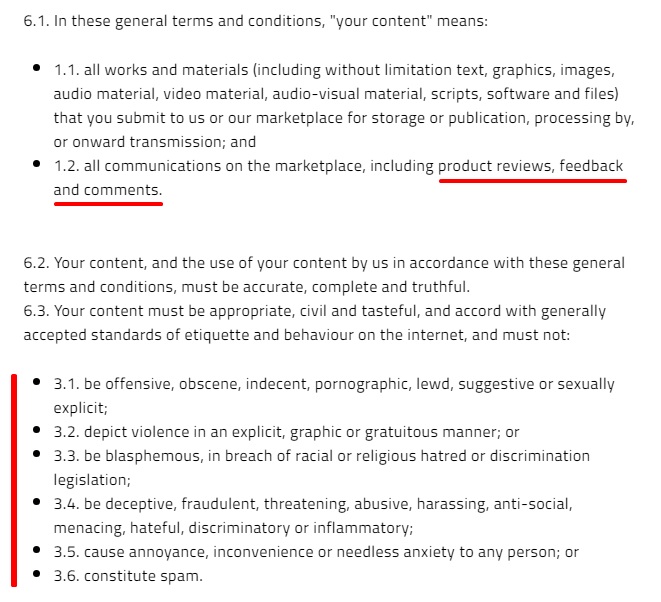
Pricing, Payments and Fees
This clause details how pricing and payment works on your marketplace. Detail any of the following that customers need to know:
- Whether prices include shipping (and if not, how shipping is calculated)
- Whether prices include taxes
- Whether any aspect of pricing, including shipping and taxes, depends on the seller's location rather than just that of the buyer
- What currency your prices are listed in, what other currencies buyers can use and what happens if exchange rates change
- When payment is taken for an order
- What payment methods are allowed and whether they carry a processing fee
- Whether you (as the marketplace operator) charge any fees to buyers
Discogs concisely covers the key points while links to a full explanation of the payment process:
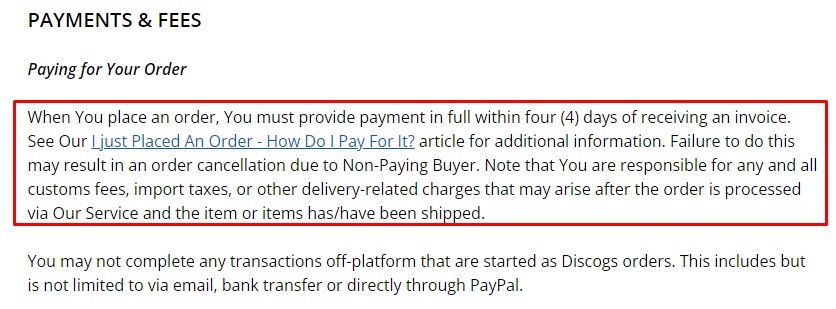
Planty.io notes that sellers set the prices in most cases, but there may be promotional events on the site that can affect this:

Returns and Refunds
Detail how returns and refunds work for buyers. If you have a full and separate Return and Refund Policy, write a short returns clause in your T&C and link to the full policy.
Make clear how returns are handled, such as by one of these three situations:
- You (the marketplace) handle any returns and refunds
- You set the rules for returns and refunds but the sellers handle and fulfil the requests
- Sellers decide their own rules for returns and refunds and take responsibility for complying with the law
If you have chosen to handle returns and refunds, or to set the rules, you need to tell buyers:
- The circumstances in which buyers can return goods (for example goods are faulty, goods are not as described, a change of mind)
- Any exceptions (for example, perishable or customized goods can't be returned)
- Where to send returns and how to package them
- Who pays the costs of returns and of sending any replacement
- How the customer will get any refund, such as marketplace credit, refund to payment card
- Deadlines and timeframes for returns
Plantly.io outlines the requirements of all parties here, noting that there's a 10 day cool-off period where products can be returned. After that, it's up to the terms of the sellers, and Plantly may intervene if needed "as a last resort." It's noted explicitly that the refund policy varies from seller to seller:
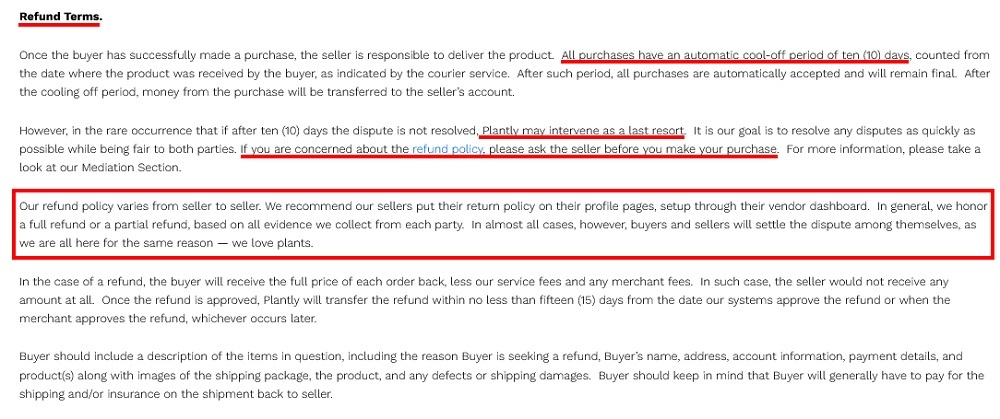
Decluttr gives concise but extensive details of how returns work:
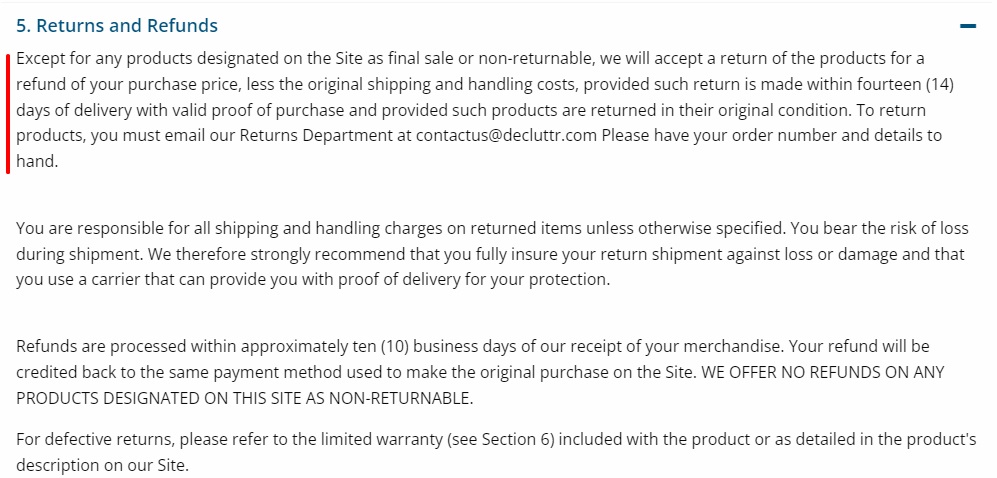
How Disputes are Handled
Explain what happens in the event of a dispute between buyers and sellers. This could be as simple as saying it is entirely between the buyer and seller. Alternatively, you may offer a dispute resolution service.
If you handle disputes, detail the following points:
- Who the buyer should contact initially with any complaint
- If they contact the buyer, how long they should wait for a response
- When and how the buyer can contact you to resolve a dispute
- What details and evidence you will require to investigate the dispute
- How long you will take to make a decision
- Whether either side can appeal against your decision
- What you will do if you find in favor of the buyer (for example, will you issue a refund yourself and claim the money back from the seller, or order the seller to issue a refund)
Make clear that your dispute handling policy does not apply if the buyer and seller make an arrangement outside of your platform, for example through e-mail or the seller's own website.
Shopee explains when it will and will not get involved in a dispute:
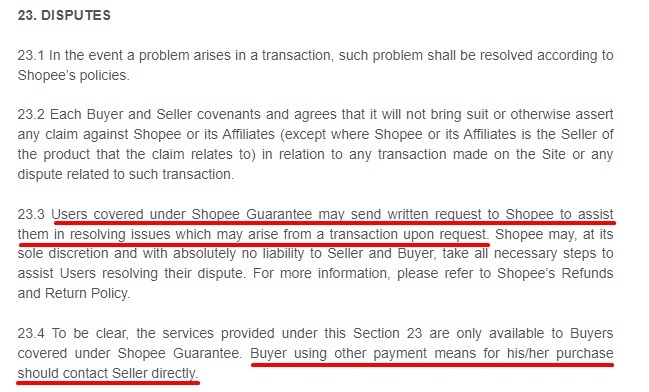
Intellectual Property
Include a clause that addresses how intellectual property on the marketplace will be handled.
Here are a few different options for addressing key points:
- Say that you own the intellectual property to what you post on your site such as any trademarks or copyright on the text. Users of the site cannot reproduce or use this material without permission.
- Say that sellers are responsible for any breaches of third party intellectual property in their listings. You could say you will take such material down if you become aware it violates intellectual property.
- Explain the situation with any material that buyers post, for example the text of reviews. A common option is to say the buyers retain the copyright but give you a licence to use it.
Wayfair uses this option for user content:
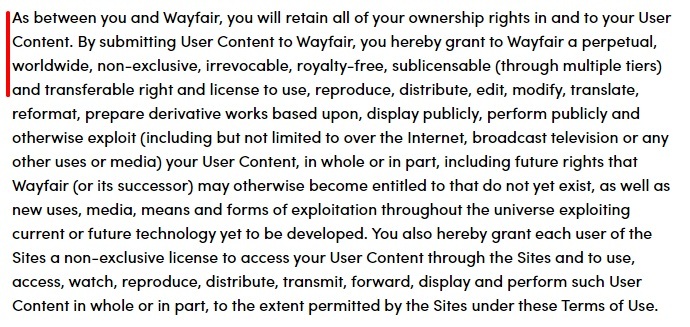
Governing Law, Jurisdiction and Dispute Resolution
This clause lets you set out your key points for resolving any legal dispute between you and users. For example:
- Governing law: Which country or state's laws apply
- Jurisdiction: Which court system the case must be filed in.
- Whether either party must use a formal or informal resolution process such as arbitration before starting court action. If so, say whether the outcome of this process is binding and final.
Alibris chooses San Francisco, California for both the governing law and jurisdiction:

Make sure to clarify the situation regarding disputes between buyers and sellers as your choice of governing law and jurisdiction may not be relevant to such disputes. This is particularly important if your marketplace has some products where you are the seller and some where a third-party is the seller.
Plantly.io warns customers about this distinction:

Liability and Warranty Disclaimers
Liability is your legal responsibility for harm caused to somebody who uses your marketplace. A limitation of liability clause is a statement that limits this responsibility, for example by doing one or more of the following:
- Specifically listing liabilities that you don't accept
- Saying you don't accept any liability except that which you've specifically listed
- Saying you don't accept any liability except that which the law requires
The safest option for a marketplace is to say you do not bear any liability for anything a seller does. This could include the content of their product listings or problems with the products themselves.
eBay establishes a general principle of not accepting liability, then gives specific examples:
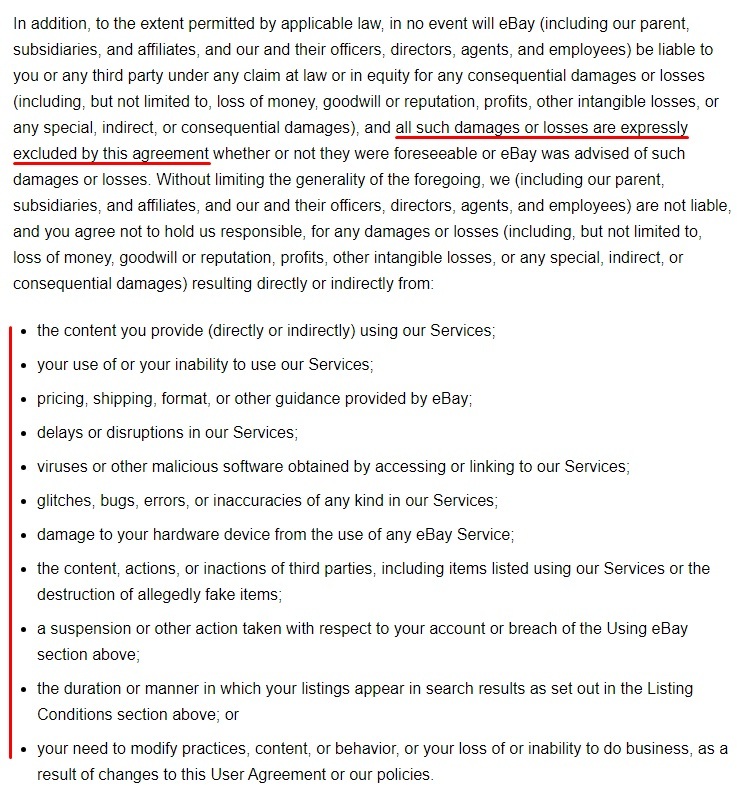
A warranty is a promise you make to a user. This can include implied warranties, which is where the law says users can assume a warranty unless you explicitly say otherwise.
A disclaimer of warranties is a statement that does one or more of the following:
- Specifically lists warranties you are not making, for example that the site will always be available
- Says the only warranties you are making are those you specifically list
- Says you are not making any warranties except for those which the law requires
With a marketplace, you will normally want to make clear that you are making no warranties about the accuracy of product listings from third-party sellers or the performance, quality or suitability of the products themselves.
AliExpress excludes all warranties (where legally allowed), then gives specific examples for emphasis:
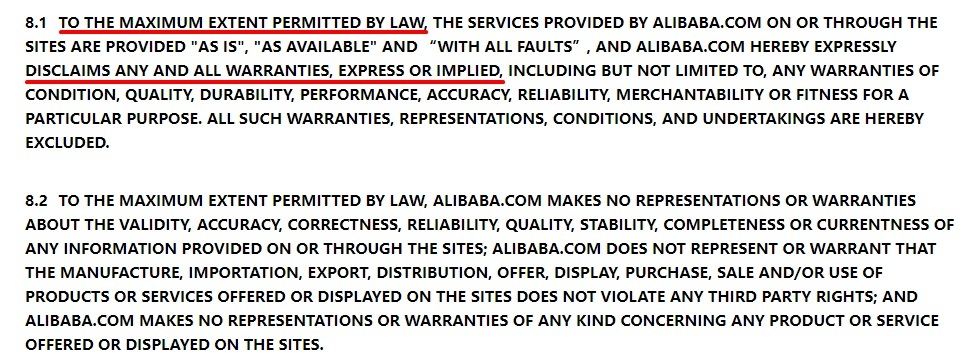
Check the law in your area as it may restrict what you can include in a limitation of liability or a warranty disclaimer. Deliberately misleading users about their legal rights regarding liability and warranties can be against the law.
A Link to Your Privacy Policy
Include a link to your full Privacy Policy. Make sure this policy covers any personal information about buyers that you pass on to sellers.
Remind users that you are not legally responsible for how sellers handle any personal information they receive from or about buyers. Where relevant, note any rules you impose on sellers about how they handle personal data about buyers.
Chairish links to its Privacy Policy and makes clear users accept it as part of the overall Terms agreement:

Account Termination
This clause covers how an ongoing legal relationship ends. With an online marketplace, this will usually mean the closure of a buyer's account. Address the following points:
- How the user can close an account
- How and why you can close their account. If one of the reasons is for breaking site rules, say whether you'll give the user a warning or close the account straight away.
- What happens to any open orders when an account is closed
- What happens to any content the user has posted such as reviews
Here's how Etsy covers termination from both sides:
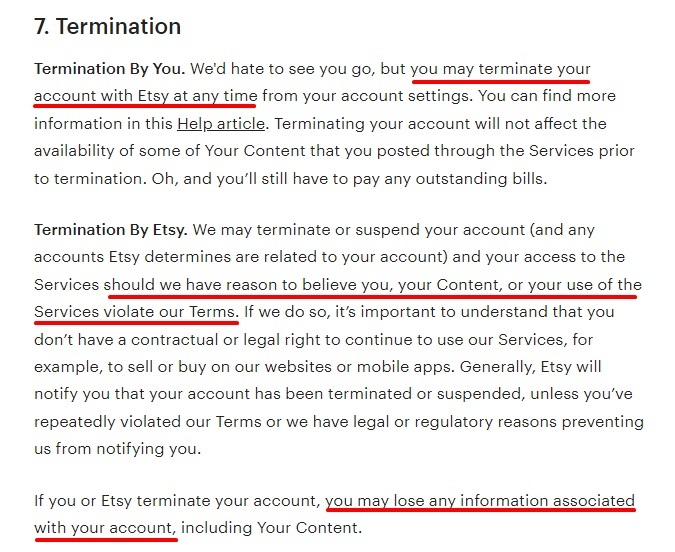
After writing your Marketplace Terms and Conditions agreement, it will need to be displayed and agreed to in order for it to be legally enforceable and effective. We'll look at these details next.
How to Display and Get Agreement to Your Terms and Conditions

If you want to rely on your Terms and Conditions in any court case, you'll usually need to prove the user made an informed decision to agree to them. In other words, that the user consented to your terms.
Users must have a reasonable opportunity to read the Terms and Conditions at any time both before and after creating an account. To ensure this, display your T&C in any or all of the following ways:
- As a dedicated webpage on your site
- Through a clear link in your navigation system, such as a footer menu, that appears on every page of your site
- Linked at the point a user signs up to an account
- As a link in any emails such as order confirmation email
Here's how Ruby Lane includes a Terms agreement link in its footer menu:

To prove a user agreed to the Terms and Conditions, require them to give an active indication. This means taking a positive action such as ticking a checkbox that is clearly labelled as signalling agreement. Don't use a pre-ticked checkbox. Make sure this action is separate to the one they take to confirm creating the account.
Bonanza covers these requirements simply in the following screenshot. Users must tick a checkbox that's labelled with a link to the terms before they can click to create an account:
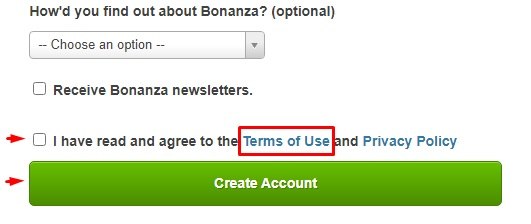
Summary
Let's recap what you need to know about Terms and Conditions for marketplaces.
Terms and Conditions agreements are sets of rules for a legal relationship. This applies to the relationship between you and your marketplace's users, even though you aren't selling goods.
Include the following specific points for buyers using your marketplace:
- Your identity, contact details and a clear statement that you are an intermediary and are not the seller
- Rules and responsibilities for the accuracy of listings
- Any banned actions for users and the consequences of breaking the rules
- How pricing and payment works including taxes, fees and currencies
- Who handles return and refund requests and how they work. Make clear if you are leaving refund rules and handling entirely up to the seller.
- How intellectual property works, including your content, seller listings and user posts such as reviews
- Which laws apply to any legal dispute between you and users, which court system should hear any case, and any alternative dispute resolution that must happen before a court case
- Any limitations on your liability (responsibility) for site users. Make clear what warranties (promises) you are and are not making about your service.
- A link to your Privacy Policy, which should cover any personal information about buyers that you pass on to sellers
- How a user can close their account, when and how you can close it, and what happens when it closes
Make sure users have a fair opportunity to read the Terms and Conditions both before and after creating an account by displaying it amply. Require users to give a clear and positive signal that they agree to the Terms and Conditions before they can create an account. Common practice here is to use a checkbox next to an "I Agree" statement or something very similar and obvious.
